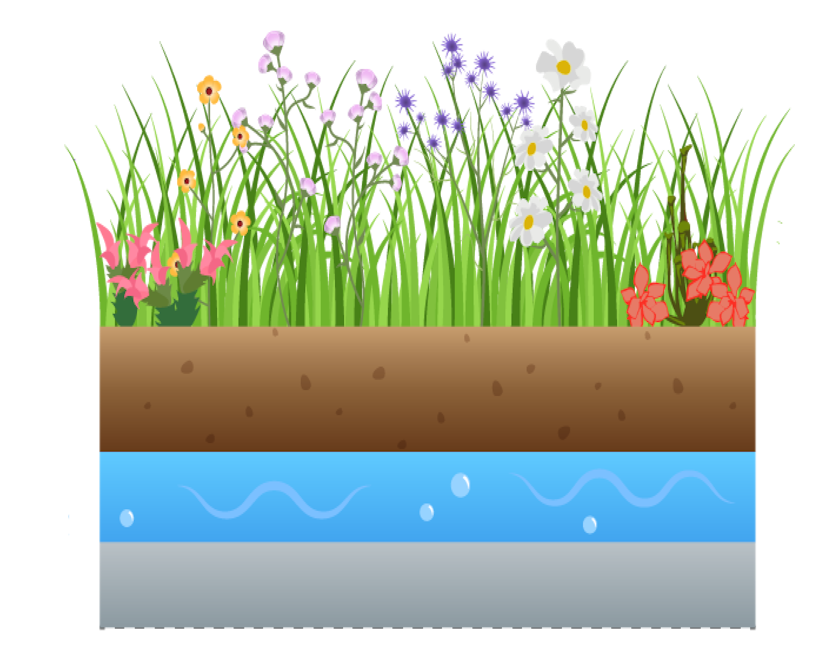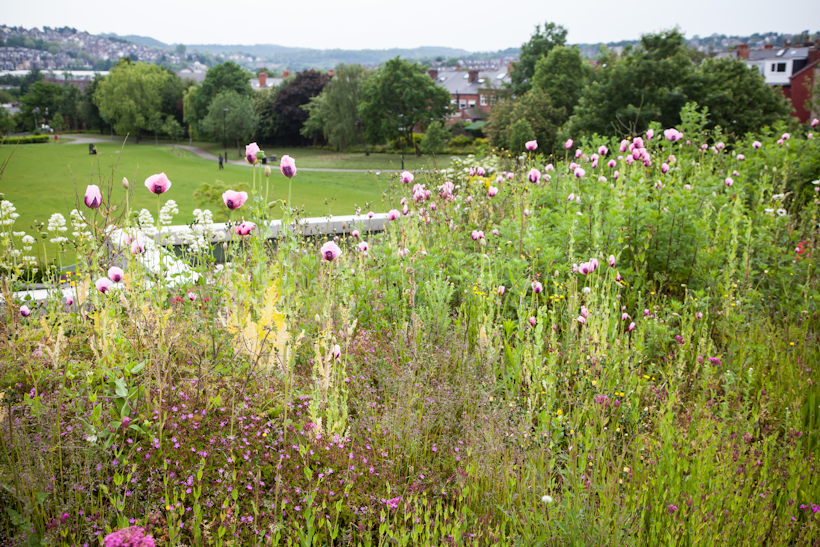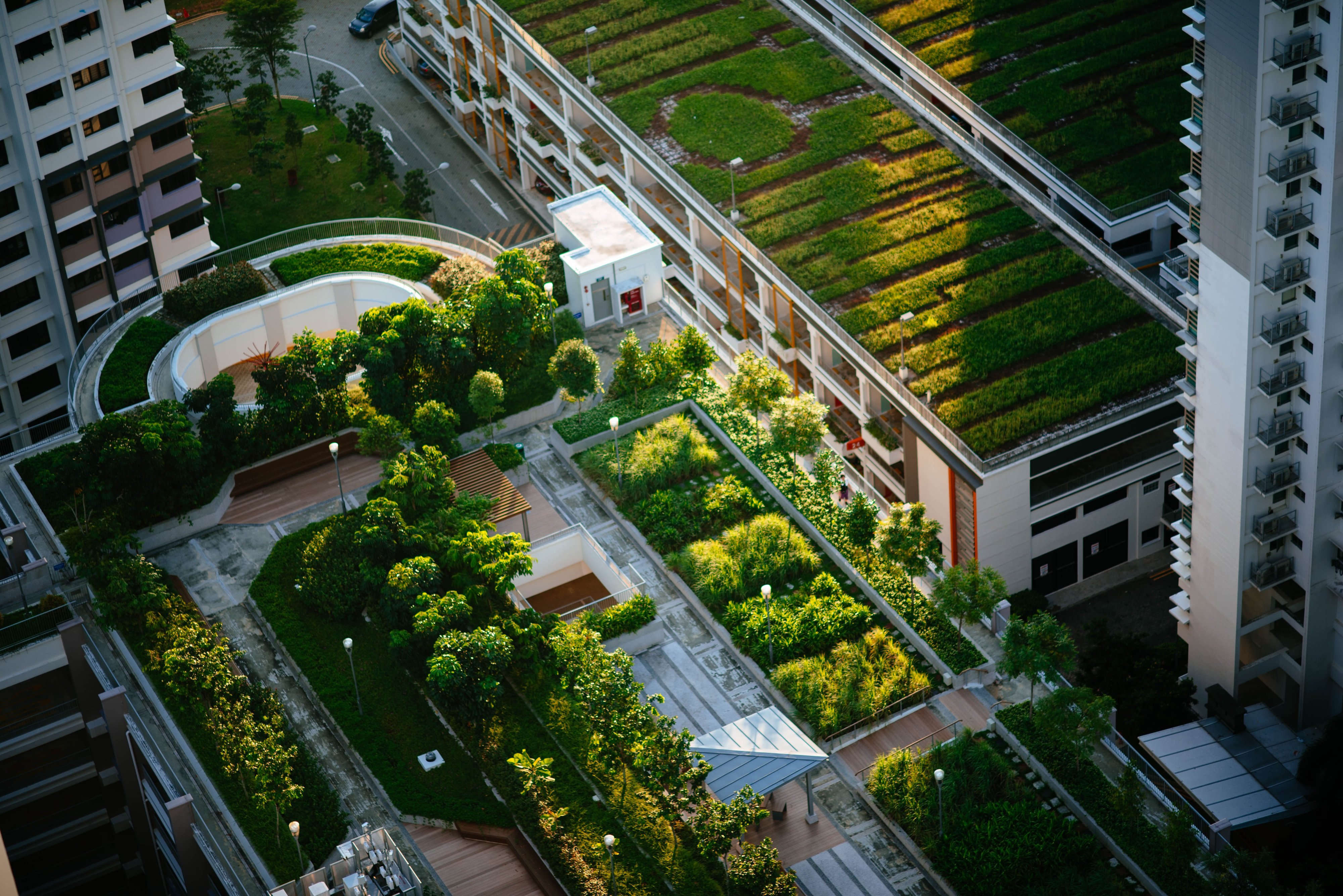As global urbanisation continues to strip our cities of green spaces, architects, contractors, and proprietors have a huge responsibility to find more sustainable, and renewable approaches to the design, construction, and operation of commercial buildings.
Sustainable infrastructure such as green roof systems are a popular solution.
Green roof systems are roof instalments that are often installed on commercial buildings and are either partially or completely covered with plant life and vegetation. These roof systems can have a variety of benefits such as reducing the overall impact buildings have on the environment, restoring eco-systems in our cities, improving health and well-being, and providing long-term structural support to buildings.
In this article, we will be looking into the four main types of green roof systems: Extensive, intensive, semi-intensive, and brown (or biodiverse).
What are the four different types of green roof systems?
The Extensive green roof system
The biodiversity value differs according to the soil depth, but as they are often pre-planted with sedums (small, hardy succulents), moss, herbs and grasses, extensive living roofs tend to have lower biodiverse value. As they come with minimal maintenance and can be a DIY install, they are often used domestically. Key features include:
- Shallow substrate depth (2-6 inches)
- Typically pre-planted
- Modular or component
- Lower biodiverse value
- Zero to low maintenance

The Intensive green roof system
Also known as a roof garden, this is the most 'involved' roof type which can be designed to be like a garden environment. Key features include:
- Roof garden.
- Deep substrate (1ft).
- Wide range of plants to choose from.
- Typically component build-up.
- Huge scope for design.
- Regular maintenance is required.
Small trees can be planted to add dimension and built structures such as seating or pergolas can be added to give this green roof system more useability.

The Semi-intensive green roof system
Leaning towards roof gardens, but without the weight of an intensive roof. You have greater design scope, and these roofs can also be used recreationally. Key features:
- Deeper substrate (4-8 inches).
- Typically component build-up.
- Ideal for designed roofs (aesthetics).
- Lower biodiverse value if for recreational use.
- Periodical maintenance.
The Brown/ biodiverse green roof system
Commonly known as 'brown roof', this type of living roof replicates biodiverse brownfield habitats with an intensive organic substrate. These are usually for the purpose of improving biodiversity or meeting environmental standards with a roof that is not overlooked, and your client requires minimal maintenance. Key features:
- Shallow soil layer of at least 2 inches.
- Pre-planted or left to naturally seed (colonisation).
- Log revetments.
- Recycled aggregates to provide additional micro-habitats.
- Modular or component.
- Zero to low maintenance.

What plants are best for each type of green roof system?
As the soil depth and design ability differ between each roof system, plant and vegetation options are not one-size-fits-all. To ensure the vegetation takes to the green roof system and provides the best solution possible for your specific needs, it is important you select the appropriate plant life.
To help you select the right vegetation for your green roof system, we have compiled a helpful list which you can view over in our blog titled “What are the best plants for green roof systems?”.
Green Roofs by Viritopia
As you can tell, we’re huge fans of green roof systems at Viritopia. In fact, we’ve installed over 100 million plants since we began experimenting with green roof systems in 2005. Whether you’d like to discuss the benefits of green roof systems further or would like to discuss your project requirements with an expert, contact us at Viritopia today.


_bsepu.jpg?w=580&h=580&q=90&auto=format&fit=crop&crop=edges,focalpoint&fm=png)